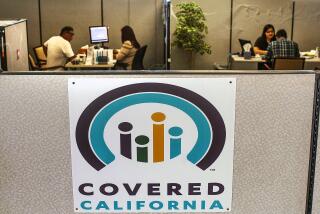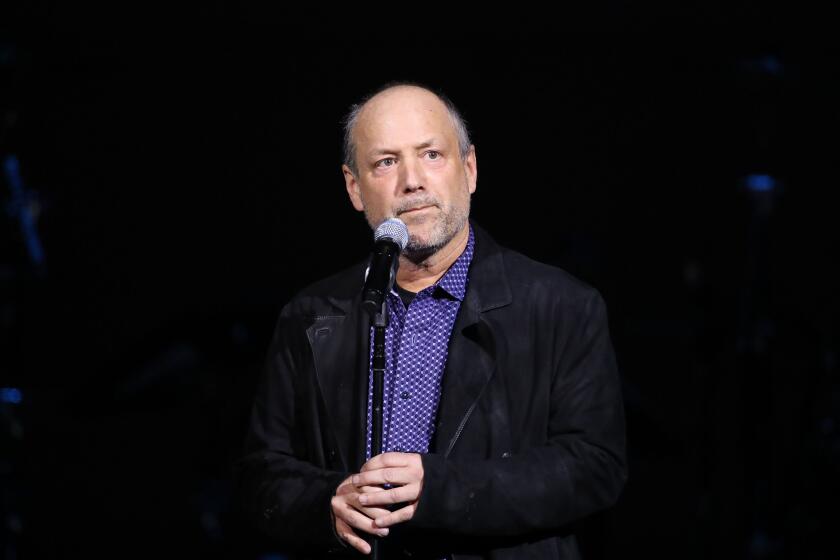Health Costs Spiral : L.A. Employers Pay the Steepest Rate in U.S. for Their Group Insurance, Survey Shows
- Share via
Los Angeles is the most expensive place in the country to buy group health insurance, with a typical company of 45 employees paying $144,000 more in premiums a year than the national average, according to a study released this week.
The average monthly premium per employee for such companies is $631 in Los Angeles--more than $300 above the national average, according to a survey of 400 cities by Milliman & Robertson Inc., a New York-based consulting and actuarial firm. Total annual health insurance costs are almost $341,000 a year.
Experts said the high figures reflect in part the expense of providing services to Los Angeles’ huge uninsured population--the largest in the country--which they estimate raises insurance costs by up to 25%.
Business leaders said the study deepened their concerns that health-care costs are contributing to a flight of aerospace, service and other businesses from Southern California.
“This does not bode well for making the economic climate friendly to businesses,” said Julia Thomas, chairwoman of the Health Issues Committee of the Los Angeles Area Chamber of Commerce.
By relocating from high-cost areas such as Los Angeles, businesses can “reduce their health insurance costs by more than half, without reducing any benefits,” said Mark Alan Chesner, a consultant with Milliman & Robertson. In such low-cost areas as Glens Falls, a town in Upstate New York, the monthly cost for health insurance was only $266 for the type of policy surveyed.
The survey showed that costs were significantly higher in Los Angeles than even New York City, where the monthly per-employee premium was $507. San Francisco came in at $489 and Chicago at $427. The national average was $365.
While experts were not surprised that Los Angeles was a more expensive health insurance market than small towns and cities in the Midwest, they struggled to explain why it would be so much costlier than New York, which is generally considered to have a higher overall cost of living. The study did not offer a reason for the difference.
Health-care experts cited the Los Angeles area’s relatively higher proportion of uninsured, the city’s large number of doctors and hospital beds relative to the population and the prevalance of health maintenance organizations as factors driving the cost of traditional health insurance in Los Angeles even higher than in other big cities.
Also--as in New York, San Francisco and other big cities--Los Angeles must bear the costs of treating drug abuse, violent crime victims and AIDS patients, which make health-care costs higher than in small towns. And big-city real estate and labor costs help drive up prices.
“This (study) will create tremendous discussion and underscores the need for health-care reform and insurance reform,” Thomas said.
While the chamber and other groups have been lobbying for changes in the health insurance system to make coverage more affordable for small businesses, reform legislation has stalled in Sacramento because of opposition from some insurance companies and employers. Other groups are pushing for a referendum on requiring employers to provide insurance.
Health-care experts said the high cost of insurance in Los Angeles creates a vicious circle. In part because insurance is so expensive, about 2.7 million people go without it. When they go to hospital emergency rooms, they run up costs that must be covered by charging more to people who do have insurance. That raises premiums, putting insurance out of the reach of more people and creating more unpaid emergency visits.
Milliman & Robertson asked 16 large health insurers to estimate costs in various cities for a policy covering a small company of 45 employees. The theoretical policy carried a $100 deductible, paid 80% of expenses and covered hospitalization, surgery, doctor’s office visits, radiology, lab tests and prescription drugs.
The monthly tab of $631 for Los Angeles was the average for all employees in the model company surveyed, including single people and employees with dependents.
The study looked at insurance costs for small businesses, which are generally higher than those for large firms. But Los Angeles usually is at or near the top of the list of most expensive cities for large corporations, too, according to Dr. Jacque Sokolov, medical director of Southern California Edison.
Employee Health Care
Below are the average monthly insurance premiums per employee of small firms in selected U.S. cities.
U.S. average: $365 Seattle $310 Minneapolis $321 Chicago $427 New York $507 Boston $416 Washington $445 Atlanta $387 Miami $620 Dallas $391 Denver $347 HIGHEST: Los Angeles $631 Source: Milliman and Robertson Inc.
More to Read
Inside the business of entertainment
The Wide Shot brings you news, analysis and insights on everything from streaming wars to production — and what it all means for the future.
You may occasionally receive promotional content from the Los Angeles Times.










